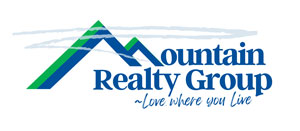2020 will be an interesting time for those looking for mortgage payment relief options. At the moment of writing this post, the country and much of the world remains in lockdown to halt the spread of COVID-19 as per orders of local, state and national governments. For many, this is a time unlike any other in memory; therefore personal finances and financial obligations and relief efforts through things like homeowning mortgage have a much higher priority in social consciousness than before.
In this article, we’ll help list and define the mortgage relief avenues available so give you a start if you are considering mortgage relief.
From www.consumerfinance.gov:
“A new federal law, the Coronavirus Aid, Relief, and Economic Security (CARES) Act, puts in place two protections for homeowners with federally backed mortgages:
1. A foreclosure moratorium.
2. A right to forbearance for homeowners who are experiencing a financial hardship due to the COVID-19 emergency.
If you don’t have a federally backed mortgage, you still may have relief options through your mortgage servicer or from your state.”
Types Of Relief Available:
* Forbearance *
This is the plan everyone is talking about since the passage of the CARES Act. Forebearance is essentially postponing/delaying paymen of mortgage payments that is done in agreement with your lender. This can be a reduction of amount owed for the time period or a full postponement of payment until the end of the time period; where the postponed amount will be due all at once.
This can be a potential answer for many homeowners during the COVID-19 quarantine, but it does not forgive any portion of the amount owed plus relevant interest. If you pay $900 per month and need to plan a forebearance with your lender for 3 months, at the end of the 3 month period you will owe $2,700 plus the accrued interest, not the regular $900. Easier forebearance agreements could be made, but this option in particular needs to be carefully considered.
* Loan Modification *
Loan modification is exactly what it sounds like – your loan and the terms that define it are legally altered. For instance, a modification could lower your monthly payments by lengthening your loan term, it could reduce the interest rate, transform it into a different loan entirely or any combination of the three.
This type directly applies to borrowers who are unable to repay the loan during a financial crisis, of which COVID-19 may apply. This type of loan arrangement typically requires a qualified attorney to successfully negotiate between lender and borrower.
* Deferment *
This is a plan that allows you to postpone your payments for a set time then pay them at the end of your regular loan term. “Deferments” and “forbearances” are often used interchangeably, but they are different. A deferment can be more beneficial for many because it eliminates the need to make up multiple payments at the end of a short postponement period, however some deferments may still accrue interest in the time period they are active and, it stands to reason, deferments are not available from all borrowers or servicers.
* Payment Assistance Program *
This is an arrangement that allows you to make up your postponed payments at the end of a forbearance period by spreading the cost over a period of time. Payment Assistance Programs are not available from all servicers.
* Cash-Out Refinance *
Many of us are more familiar with refinancng mortgages in the last decade following the recession and countless advertisements for home mortgage refinancing, but less frequently known or used are cash-out refinancing. Similar to standard refinancing, a successful cash-out refinance will reshape an existing mortgage with new terms, interest rate and time limits but for a higher amount of money borrowed, a higher interest rate and more points paid out with the difference paid out to you in cash.
Equity is used in this transaction and may be a good fit for some homeowners and not a good fit for others compared to a rate-and-term refinance (the difference being that rate-and-term traditionally offers lower interest rates and a new term with the trade off that there is no advance money like with a cash-out).
* Home Equity Line of Credit *
If you still have enough income to qualify, accessing equity in your home by refinancing or obtaining a secured credit line may be a good option for lowering your payments, consolidating other debts, and/or creating a cash cushion. Like a traditional home equity loan, a HELOC uses the difference between your home’s value and the current balance on your mortgage as collateral and a second lien is instated where home equity lenders can possess the house if there are failures to make payments to the new loan.
But because a HELOC loan is secured against the value of your home, the interest rates that are imposed on the loan are usually close to what your first mortgage was and successful borrowers will find financing fees are comparatively much smaller than you would find for unsecured loans in the same amount.
Conclusion
If you want to discuss your options for a refinance or HELOC, please contact your lending institution. To set up the other options listed here, please reach out using the contact information on your monthly loan statement. Document all calls and agreements, then check your monthly statements and credit reports to assure that changes are reported correctly.
I hope this helps you understand the available options. If you have questions, please reach out.








